Smart home application in modern life
Smart home application in modern life brings an ideal and comfortable living space to users with great experiences.
Turning the apartment into a comfortable smart home with many technology applications will bring a modern living space. Users can mix and match specific smart home devices that make life easier and enjoy benefits like energy savings, better home security, and automating some of the decisions you make. issued during the day.
Get started with strong Wi-Fi
A good Wi-Fi signal is the foundation on which you build your smart home. But even the best smart home devices can be hindered by slow Wi-Fi.
The two most commonly used Wi-Fi frequencies are 2.4 GHz and 5 GHz. The 2.4 GHz frequency has longer range and lower power consumption, while the 5 GHz band is faster. Since the 2.4 GHz frequency is better at penetrating walls and other obstacles, most smart home devices only use the 2.4 GHz frequency.
Many Wi-Fi routers combine the 2.4 and 5 GHz frequencies under the same network name, automatically switching to the fastest available frequency. But this can lead to some temporary dropped connections as devices switch back and forth between frequencies.
To avoid this, you should set up a separate network for smart home devices that use only the 2.4 GHz frequency. Most routers allow you to do this by setting up a separate guest network.
How much internet speed do I need for a smart home?
Most smart home devices use very little bandwidth — typically less than 1 Mbps per device — but that can add up when you're connecting dozens of gadgets beyond your usual activities. like streaming and browsing the Internet.
Look for at least 50 Mbps download and 20 Mbps upload — the bare minimum that smart home builders are recommending.
Consider an internet network system
If your Wi-Fi has trouble reaching every room in your house, a mesh system is the best solution. These systems often come with two or three routers instead of one, so you can spread your Wi-Fi connection to every corner of your home. In larger homes, this will help ensure your smart home devices never suffer from a weak signal.
Choose a voice assistant
Voice assistants or smart speakers are the entrance into the smart home universe, and chances are you already have one. Why start with something so basic? Your voice assistant will help you set up processes across the rest of your devices, so you'll want to make sure that anything you buy in the future will be compatible. Basically, you have three options when it comes to choosing a voice assistant.
Amazon alexa
The most popular voice assistant is Amazon's Echo series of devices. They're great for everyday tasks like turning on music, ordering online, and telling jokes, but Amazon's Alexa platform also has the widest compatibility with other smart home devices. If you are starting a new home this is the most logical place to do it.
Google Assistant
Google's smart speaker is another affordable way to start building your smart home. You can seamlessly integrate your Google accounts into your smart ecosystem. Want to get voice reminders from your Google calendar? How about updating commute via Google Maps? Finding a relaxing space with the Goodle assistant through an online music platform is also not a bad idea.
We recommend starting with Amazon simply because it has more smart home integrations than Google right now. That said, you can easily build a great smart home using assistive devices.
Apple
If you're an Apple fanatic, you might be interested in their use of a smart home. It's called HomeKit and it can only be used by an iPhone, iPad, or Mac. HomeKit devices are branded as user-friendly by Apple, but there are very few that work with Apple's ecosystem. (Look for smart home devices that say “HomeKit-enabled.”) Apple's smart home products also tend to be slightly more expensive than similar products from Google and Amazon.
Set up your home security system
More than any other part of your home, security systems have come a long way in the smart home era. From smart locks to video doorbells, home security systems have never been cheaper to install and use.
Doorbell with camera
If you're only going to buy one home security device for your smart home, turn it into a doorbell with a camera. Video doorbells are motion-activated, and most offer two-way communication through your smartphone.
Security cameras
If you want a little more coverage than a single camera doorbell can deliver, we recommend beefing up your system with additional security cameras. With built-in motion detection, smart security cameras can alert your phone when they sense anything amiss around your home.
Smart locks
If you are the type of person who never remembers whether or not you locked the door before going out, a smart lock is well worth the investment. Many homes have keypads that allow people to enter with a code, but you can also lock or unlock your home remotely via your phone. Some even use fingerprint sensors to verify your identity.
Automate your energy use
Smart homes can be great for your energy bills. The average smart thermostat will save you about 8% on annual heating and cooling costs. Many energy companies also offer discounts for replacing an old thermostat with a smart thermostat.
That energy efficiency isn't just good for your pocket — it's good for the environment, too. If every American installed a smart thermostat, the impact on greenhouse gas emissions would be equivalent to removing 1.2 million cars from the road.
Decide what you need to use
This is where it really starts to get fun. This is where you can start choosing appliances that will really make your home look like the future.
Smart plug
Turning your home into a smart home doesn't mean you have to throw away all your old devices. Smart plugs aren't the flashiest technology out there, but they can turn all your old lights, fans, and appliances into fully automated machines. Most smart plugs work with Alexa and Google voice commands, and you can also control them through a phone app provided by the vendor.
Smart light bulb
If you want to turn off all the lights in the room through your smartphone or voice, smart bulbs are an easy and cheap way. Smart lights can also turn on and off by themselves with a thermal sensor or a combined infrared camera.
Motion sensor
For many people, the purpose of a smart home is to eliminate the thousands of small decisions we make every day in our homes. For example, if you want the lights to turn on automatically in your living room, you'll need a sensor that tells it when you walk in. You can also use these sensors to warn you if someone shouldn't be in your home.
Key point
There's no one-size-fits-all smart home solution when you decide on an ecosystem you're comfortable with, you can mix and match devices to suit your needs. its use. That could mean fully automated lighting and heating, or just some basic home security essentials. What's important is that it fits seamlessly into your established routines.












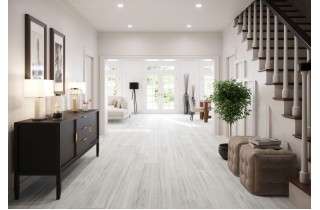


-200x200.jpg)
-200x200.jpg)




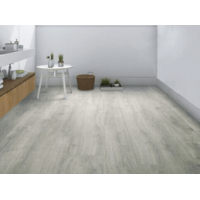
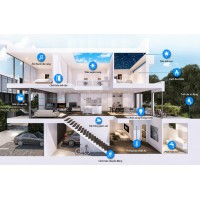
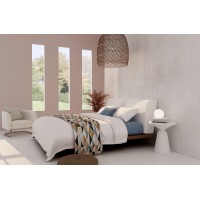





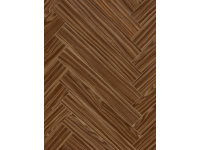

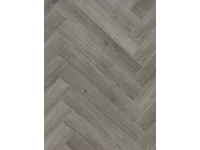
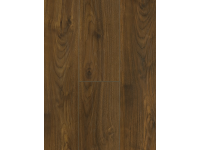

.png)



comment(s)